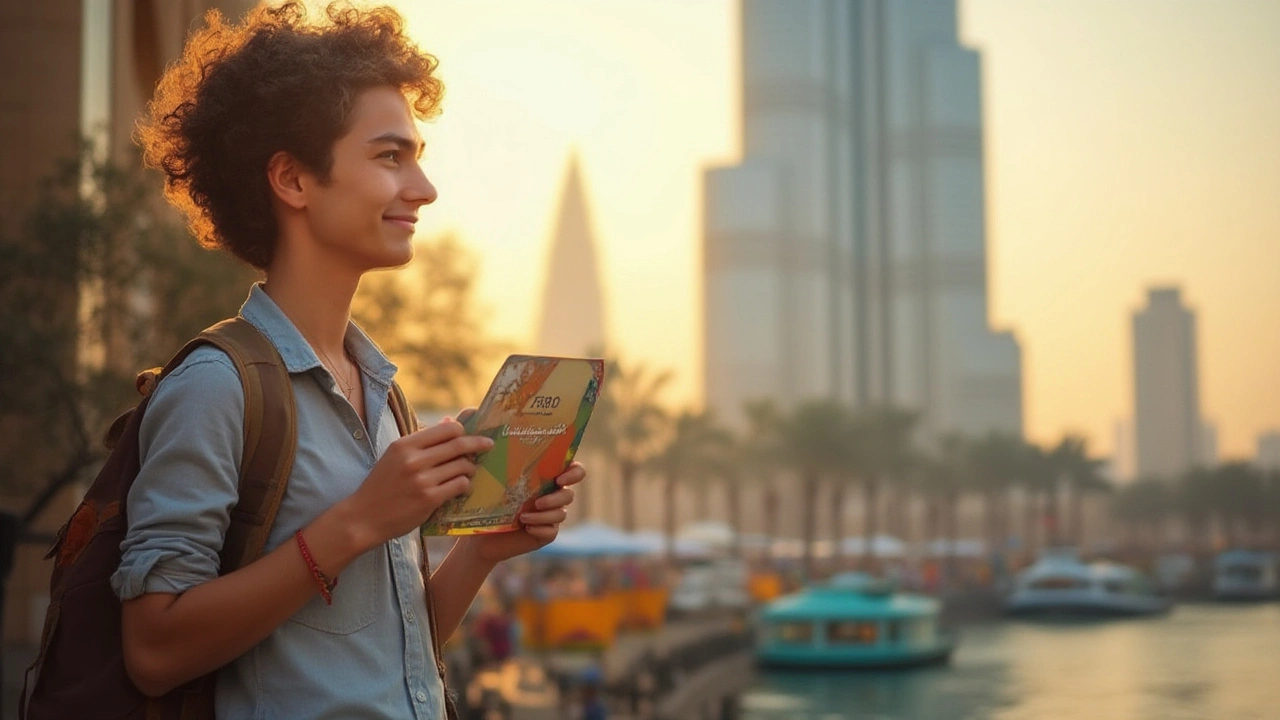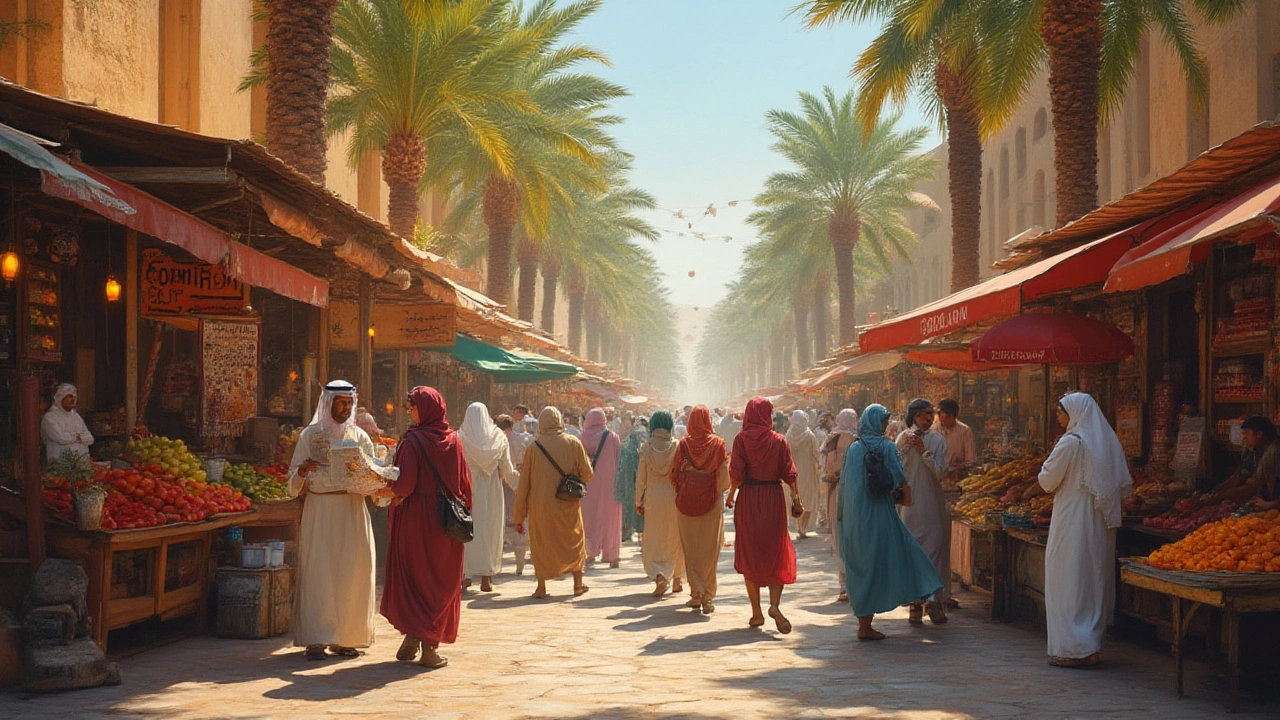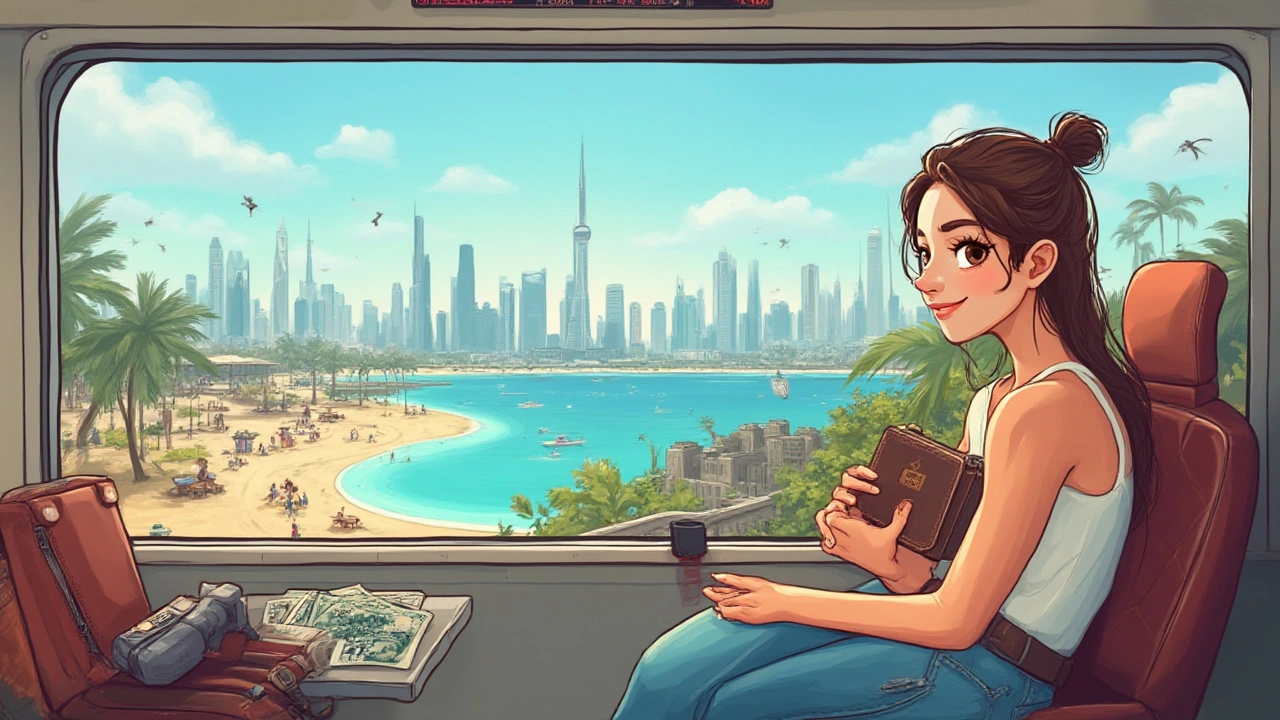
Think you need to be a millionaire to experience Dubai? Spoiler: You don’t. But is $100 a day really enough to make it in a place famous for gold-plated cappuccinos and the world’s biggest shopping mall? That’s the question that brings most travelers down the Google rabbit hole, especially if you’re eyeing up those flights for a Middle East adventure. Sure, you’ll see headlines about billionaires and Bugattis, but Dubai has pockets where $100 can go surprisingly further than expected—as long as you know what to avoid (Champagne brunch, anyone?) and where to hunt for bargains. Forget the stereotypes and let’s look at the nitty-gritty: what can you actually get with $100 a day in Dubai?
What $100 a Day Really Buys You in Dubai
Let’s break it down street-level before you pack your suitcase. First, crunching through exchange rates: $100 today is about 367 dirhams (AED), give or take with currency swings. Dubai’s rep for luxury isn’t all smoke and mirrors—yes, you could blow that much just on sushi at Nobu or one pool ticket at a fancy hotel. But if you play it smart? Here’s what $100 buys you in modern Dubai.
Hostels and basic hotels charge around AED 100-200 a night for a bed, sometimes including breakfast. Shared rooms, capsule hostels, or budget hotels—think international youth hostels or low-key local joints—are your go-to. Airbnb can be a jackpot for monthly stays; daily, you’ll be squeezing it.
Transport comes next. A Nol card (Dubai’s metro/bus travel card) is your lifeline. A daily budget of AED 25-30 grants unlimited access to metro, tram, and buses. Taxis? They’ll chew through cash fast, so stick to the network unless you want a late-night Uber splurge.
Food is where personal taste kicks in. Ignore the steakhouse Instagrammers and you’ll survive; hole-in-the-wall Indian, Pakistani, and Filipino cafes price out at AED 15-30 per meal, and these are everywhere. Shawarma stands and supermarket bakeries hold you upright for a couple of dirhams. Want a flat white? Coffee chains are brutal: AED 18-25 just for one cup, so go local for breakfast tea instead.
Toss in basic sightseeing—plenty is free: Dubai Mall’s fountain show, walking Old Dubai, basking in Jumeirah Beach, or the historic Deira souks. The Burj Khalifa observation deck will eat half your budget, so prioritize what you can see from the outside for now. Souvenir shopping? Skip the malls. Hunt bargains in the Karama markets instead.
Bare-bones breakdown for a thrifty day might look like:
- Hostel: AED 120
- Transport: AED 20
- Three simple meals: AED 60
- Sightseeing/misc: AED 40
Hidden Costs and Unexpected Savings
Dubai loves surprises—some wallet-friendly, some not so much. The big hidden cost for most visitors? Water and heat. In July, the mercury hits insane highs. You’ll want a constant drip of bottled water, and that adds up unless you're clever: buy a large bottle at the grocery instead of the small ones at tourist traps (AED 2 vs AED 8-10). Most malls and metro stations have filtered fountains, so stash a refillable bottle. Air-conditioned refuge is non-negotiable. Every step outdoors in the summer feels like a sauna, so plan midday breaks inside malls or metro stations. This helps you save energy—and possibly money you’d regret spending at the next overpriced juice bar.
Tourist taxes can surprise you. Dubai hotels charge a ‘tourism dirham’ per night, usually AED 10-20 for budget accommodations. The price you booked rarely includes it, so factor it in every night.
Alcohol is pricey. A beer at a hotel bar? Easily AED 40-60. This smashes your $100 daily goal real quick. Think happy hours or skip booze entirely if you’re serious about your budget. Even water pipes (shisha) in touristy areas will eat into your funds—better to try them in out-of-the-way cafes if at all.
But savings are out there. Museums, especially in Old Dubai, cost little or nothing for entry. Some of the best cultural footage is free: explore Al Fahidi district, spy on the daily scene at Dubai Creek, or check out public art displays around the city. There are frequent city festivals and outdoor art projects that cost nothing but your time.
Tech tip: Download Careem or Uber to check taxi rates in real-time. Sometimes a ride-share is the smartest split if you’re with friends. Metro and bus routes are extensive, but if you can’t decipher the map, Dubai’s RTA journey planner app dodges confusion.

Food and Drink: Survival on a Shoestring
Nothing tests your budget like food in Dubai. Everyone raves about glittering rooftop brunches, beach clubs, and Instagrammable sushi towers, but strip it back and Dubai’s street food scene is the real hero.
The best value? South Asian cafes lining Deira, Karama, Satwa, and Al Fahidi. Here, a filling biryani or thali meal runs AED 15-25. Filipino eateries serve heaped plates of adobo or pancit for AED 20-30. Iranian bakeries crank out warm bread and tea for pocket change. Even expat-heavy JLT and Dubai Marina have local chains and cafeterias that feed construction crews for next to nothing—if you blend in, nobody bats an eye.
Fancier fast food, like KFC or McDonald's, will cost about AED 25-30 for a combo meal. Burger joints in malls up the ante (AED 40+) but are still doable as a treat. Fresh fruit juice stalls are everywhere—perfect for cooling off in the relentless heat for AED 5-10.
Breakfast tight? Bakeries will rescue you with manakish, samosas, or a cheese bread for AED 5-10 apiece. For coffee, dodge global chains. Local cafeterias (just look for crowds) serve traditional Arabic coffee or chai for AED 2-5. Prices shoot up at hotel coffee shops, so save that for a rare splurge.
Markets and supermarkets are your best friend if you have access to a fridge or microwave. Spinney’s, Lulu, Carrefour—they all have ready-made meals, salads, and snacks for a song compared to restaurants. Buy big bottles of water, fruit, and a few tins for lunches. If your hostel has a communal kitchen, you’ll eat like a (savvy) queen.
- If you want to try street eats: Seek out Al Mallah (shawarma legend), Ravi Restaurant (Pakistani classic), and Al Ijaza Cafeteria for a true Dubai snack crawl.
- Vegetarians will be happy: South Indian veg meals are reliably cheap, tasty, and generous.
- Don’t stress about tap water; officially it’s safe, but the taste isn’t great. Use a filter or opt for bottled.
Dubai budget travel becomes a lot more doable when you eat like a local, not a celebrity.
Getting Around the City Without Broke Syndrome
Forget about renting a car if you’re on a $100 limit—petrol is cheap, but insurance, parking, and fines aren’t. The Dubai public transport system is the clear winner if you want comfort and value.
The wonder of Dubai’s metro is how spotless, punctual, and safe it feels. Single journeys use a Nol card (AED 3-8 depending on distance), but the Red Line hits key spots—Burj Khalifa, Dubai Mall, Mall of the Emirates, Deira, airport terminal. To get real value, buy a daily metro pass (AED 20) or weekly if you’re staying longer. Note: Trains have special ‘Gold Class’ and ‘Women and Children’ cabins—stick to Silver Class unless you’re happy to pay extra.
Buses, trams, and even a few ferries all link up using the same Nol card. Dubai’s buses are heavily air-conditioned (bring a jacket, honestly) and will take you further into old neighborhoods for less.
Taxis are atmospheric and everywhere—flag down cream-colored RTA cars or order via Careem or Uber. The meter starts around AED 12, but journeys get expensive fast in traffic or at night. For late returns after the metro closes (usually midnight), grab a bus or pool a taxi with new friends from your hostel.
Tip: Want the iconic abra (small boat) ride? AED 1 will ferry you across Dubai Creek, mixing with local shoppers and traders. It’s not just cheap—it’s Instagram gold.
Plan your journeys with RTA’s online planner, and check Google Maps for the latest public transport updates. Walking isn’t the best idea between stops—Dubai’s summers are punishing, and crossing major roads on foot can be like playing Frogger for adults.
- Pack light layers and plenty of water for any transit ride.
- Respect metro etiquette (no eating, chewing gum, or PDA on trains).
- Avoid private taxis flagged on street corners—stick with official RTA rides only.
Most smart travelers opt for a weekly or monthly Nol pass if they stay a while, dropping daily costs further. The longer you’re in the city, the smarter (and cheaper) your commute gets.

Sightseeing and Entertainment Without Blowing Your Budget
Sure, you could bankrupt yourself at theme parks and rooftop pools, but you don’t have to. Dubai does wow-worthy scenery for free—or nearly free—if you know where to look.
Top of the free pile? Dubai Mall and the Burj Khalifa Fountain. The dancing light-and-water shows run every evening, with crowds gathering lakeside to watch. Window-shopping the world’s glitziest mall costs zero (unless you cave and buy a chocolate for $8 at the food hall, no shame). Walk right outside to snap those priceless Burj Khalifa views at sunset for your feed—no ticket required.
Jumeirah Public Beach is spotless, safe, and won’t cost a single dirham. Stroll the sand, swim in the Gulf, and gawp at the Burj Al Arab in the distance. Kite Beach, close by, is equally lively with budget food trucks, workout stations, and endless people-watching. Always bring your own snacks and water.
Old Dubai holds the real charm. Explore the spice and gold souks around Deira—bargaining is expected. The Al Fahidi historical neighborhood (once called Bastakiya) is a maze of wind-towers, tiny museums, and quirky art galleries; most are free or ask for a tiny donation. Al Seef, a modern take on the old Creek, mixes tradition and Instagram backdrops with wallet-friendly cafes all along the water.
Curious about mosques? Jumeirah Mosque runs informative tours for a modest fee (AED 25), giving you rare access to a fascinating local tradition. The Dubai Museum (AED 3 entry) walks you through the city’s fishing port roots to the super-city of today.
Street art fans should roam City Walk and La Mer for murals, installations, and pop-up shows—all free to browse. If you’re desperate for retail therapy, Karama Market is souvenir-central, while Dragon Mart is a weird, gigantic Asian bazaar with bargain finds everywhere (if you’re ready to hunt).
- Look for online deal sites like Groupon or Cobone for discounts on attractions or tours.
- Friday and Saturday are peak days for public places—come early or late to dodge crowds and get better photos.
- Cultural festivals kick up, especially in cooler months; check social pages like Visit Dubai for listings and pop-up events.
The only things consistently out of range on $100? Luxury desert safaris, five-star hotel pools, and high-end clubs. But the city glitters brightest from its public spaces—just bring your own snacks and energy for exploring.
Dubai Escort